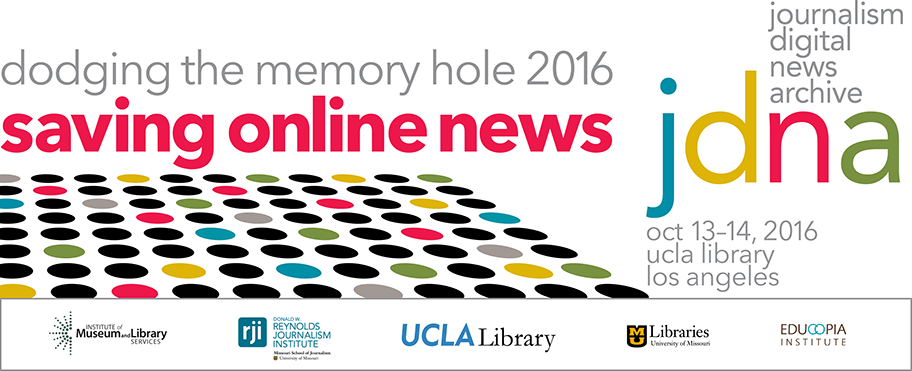
Search Results for results
Panel: The future of the past: Modernizing The New York Times archive
Scroll to view transcript EVAN SANDHAUS: [00:08] Thank you for bearing with me while we get the technical things ironed out. I’m Evan Sandhaus, and I am here with my team today to talk about some work we’ve been doing with migrating The New York Times archives. A little bit later, once we say our … Continued
Memory holes and permanent errors: Part 3
The preservation of online news corrections, updates and post-publication edits.
Memory holes and permanent errors: Part 2
The preservation of online news corrections, updates and post-publication edits.
Journalism, the intelligence community and technology
Editor’s note: The author, who spent a year as an RJI Fellow exploring ways to report and create news stories using databases, has recently received funding to develop intelligence applications of his Structured Stories journalism database. The funding is being provided by the U.S. federal government’s Small Business Innovation Research (SBIR) program.
What the Coloradoan staff is learning while experimenting with bots
We asked newsrooms and ad agencies what they are doing today that they weren’t doing a year ago. Turns out quite a lot! This new RJI series will highlight some of the innovations and experiments we discovered and share what leaders are learning along the way. We call it The What’s New Q&A?
Reynolds Journalism Institute announces 2017-2018 class of fellows
The Donald W. Reynolds Journalism Institute has selected six fellowship projects for 2017-2018 that will focus on filter bubbles, bite-size training and business-side analytics. “If you were looking for one word to describe this class, I’d suggest ‘practical,’” said Executive Director Randy Picht. “These projects are built to have an impact from the minute they’re … Continued
True or false: PolitiFact, pols and pundits
Who in the news is lying? Who’s telling the truth? To find out I “scored” each person and group checked by PolitiFact.
Trust us, your news consumers really want to talk to you about trust
It turns out, plenty of news consumers are eager to talk to journalists about trust. The 30 official newsroom partners in the Trusting News interview project have begun reaching out to their audiences, and the results have exceeded my expectations. Some newsrooms are seeing more than 1,000 responses to their introductory questionnaires. (Here’s what the … Continued
How building trust with news consumers is like dating
Relationships take work. You don’t get intimacy without putting in some time. You don’t ask for favors without offering the equivalent yourself. You earn trust by being there consistently, and by listening. The Trusting News project is basically a recipe for a genuine, two-way relationship with news consumers, rather than just an exchange of information. Relationships … Continued
Digital preservation: 7 steps to get started
There are a number of practical steps publishers at news agencies can do to lay the groundwork for preserving our historical record. While this is not a complete set of instructions for digital preservation, it will prepare the way for more advanced efforts to follow. 1. Reach out One of the best first steps to … Continued








